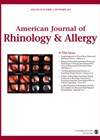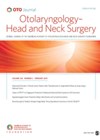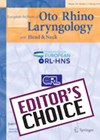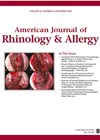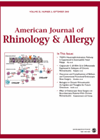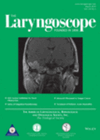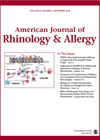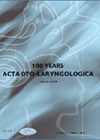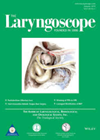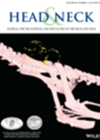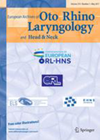
Journal Reviews
Sinus implants to treat recalcitrant polyps
It is well established that the burden of chronic rhinosinusitis on healthcare costs and patients’ quality of life is high, and that current mainstream treatment options of oral or topical steroids are not without problems. This paper compares two RCTSs...
Sphenopalatine ganglion block in endoscopic sinus surgery reduces intra and post-operative morbidity
The authors present results of a meta-analysis to investigate the role of sphenopalatine ganglion block (SPGB) in reducing postoperative pain in endoscopic sinus surgery (ESS). An electronic database search (Pubmed, SCOPUS, Google Scholar, Embase, and the Cochrane Register of Controlled...
Outcomes for transoral vestibule approach thyroid surgery
Ed’s choice explores a systematic review examining one of the recent innovations in head and neck surgery. It may come as a surprise to some that within a few years of the first published cases of transoral vestibule thyroidectomy, an...
An eye-opening resection technique
It is widely accepted that the gold standard treatment of inverted papilloma of the maxillary sinus (IPMS) is endoscopic excision via medical maxillectomy or mega antrostomy, and these approaches can be augmented by a Caldwell-Luc or canine fossa trephination if...
Balloons – more complicated than first thought?
This study describes the complications seen after balloon sinuplasty (BSP) - a commonly performed procedure (particularly in the USA where it is often performed as an office procedure) versus traditional functional endoscopic sinus surgery (FESS). The data source was a...
Does Tranexamic acid reduce intraoperative bleeding during FESS?
Intraoperative bleeding during FESS can reduce visibility and obscure important landmarks. This can result in longer operative times, increase risks of complications and even lead to incomplete surgery. Tranexamic acid is a drug which prevents fibrinolysis and stabilises blood clots....
Three-dimensional endoscopy for sinonasal procedures: is it really better?
In this interesting study the authors looked at the efficacy of two-dimensional (2D) versus 3D high-definition endoscopes in novice users, not those already trained in 2D. Ninety-two medical students used 2D and 3D endoscopes to complete two validated tasks and...
A novel way to reduce postoperative nausea and vomiting
This is an interesting RCT which evaluates the prophylactic effect of bilateral endoscopic injection of local anaesthetic in the sphenopalatine ganglion (SPG) on postoperative nausea and vomiting (PONV). It has a robust design, and is sufficiently powered and blinded, with...
Balloon compared to FESS – long-term patient satisfaction
Balloon compared to FESS – long-term patient satisfaction This paper is the first controlled study of balloon sinoplasty’s long-term efficacy, with a follow-up extending over five years. There were 208 patients analysed and 88 recruited. Exclusions were nasal polyps grade...
Which da Vinci surgical system? Novel flexible, single-port versus current multiport, rigid-arm robotic surgical system
The da Vinci robotic surgical system has transformed how oropharyngeal head and neck surgery can be delivered. The existing da Vinci Si model has challenges: the dimensions of this are larger than would be ideal for head and neck surgery...
The newest robot from da Vinci – what can it offer for hypopharyngeal cancer surgery?
The standard existing da Vinci surgical robot (the Si model) has been much maligned for not being optimally designed for transoral access and endoscopic manoeuvrability in head and neck surgery. This preclinical work from Holsinger and his team looks at...
Managing spontaneous CSF leaks secondary to benign intracranial hypertension
Spontaneous CSF leaks are a rare entity. In this paper, a Spanish group report their experience managing the condition using endoscopic surgery in 35 patients over an eight year period. Leak locations included the cribriform plate (18/35), ethmoid roof (15/35)...

